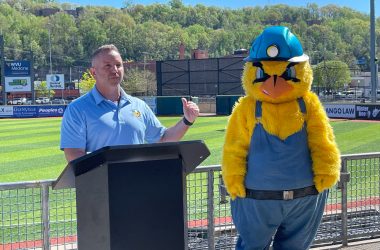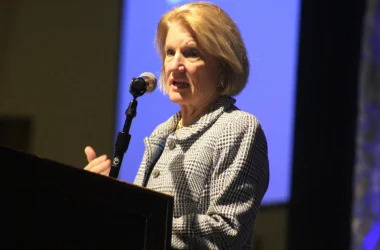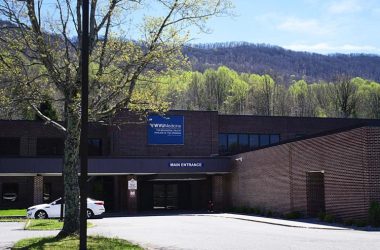ELKINS, W.Va. — Around 330,000 hunters will take to the woods of the Mountain State starting today for buck firearms season, which runs until Dec. 3. The season is open in all counties except Logan, Mingo, McDowell and Wyoming.
According to Southwick Associates, hunting contributes $500 million each year to the state’s economy. Deer hunters spend an estimated $230 million in West Virginia, much of it in the rural areas of the state that depend upon the deer seasons for a large portion of their annual income. Hunting is estimated to be responsible for 5,400 jobs and $35 million in sales taxes on goods and services spent in West Virginia, according to the West Virginia Division of Natural Resources.
In 2015, the traditional bucks-only firearm season harvest was 60,814 antlered bucks, an increase of 62 percent from the 2014 harvest. This is 20 percent more than the 5-year average bucks-only harvest of 50,795 and ranks 24th among all past years, DNR officials said.
The WVDNR predicts the buck harvest should be lower in 2016 than in 2015. There should be a strong yearling age class born in spring 2015 following the bumper oak crop of 2014. However, the percentage of yearlings in the harvest has remained low due to hunters choosing to wait for larger, older bucks. Oak mast will have deer spread out over the landscape and less visible in fields and harder to harvest.
Hunters Helping the Hungry
West Virginia’s deer season helps put food on the table of the needy through a unique program that provides nutritious venison to people in the Mountain State.
For the past 25 years, generous hunters have been helping feed the hungry by donating portions of their harvest to the Hunters Helping the Hungry Program, which provides thousands of pounds of venison to needy families across the state.
Hunters participating in the program take their deer to certified meat processors where it is turned into two-pound packages of ground venison.
Since the start of the program, generous hunters and financial contributors have enabled the processing of 23,981 deer. That has allowed 917,350 pounds of highly nutritious meat to be made available to needy families and individuals throughout West Virginia.
The Mountaineer Food Bank (Gassaway) and the Huntington Area Food Bank, both members of Feeding America, collect the venison and then distribute it to the needy through their network of qualified charitable food pantries, soup kitchens, senior centers, shelters, community centers, orphanages, missions and churches statewide. Financial support for Hunters Helping the Hungry comes from concerned individuals, businesses, conservation organizations, foundations and churches.
Jerry Waugh of Waugh’s Custom Cutting in Buckhannon has been participating in the program since its early days.
“We think it’s an excellent program. It helps a lot of people. If they want to donate a deer, we require that it’s in good shape. They want us to debone it completely and package it in about 2-pound packs. We weight it up, call the food bank and they come and get it,” he said.
Waugh said venison is a healthy meat that has been part of the traditional appalachian diet going back a long time.
“We have a lot of old people whose doctors tell them they can eat all the venison they want compared to beef. The health benefits are good. It doesn’t have the cholesterol, and it’s an excellent source of protein,” he said.
Bud England of B&L Beef in Belington agreed that putting venison on West Virginia dinner tables is a noble task.
“It does help a lot of people. We anticipate doing maybe 400-500 pounds of venison. It all goes back to the Mountaineer Food bank. They distribute throughout the state. We’re really pleased to be a part of the operation, and we’re very pleased with the hunters who support the operation,” he said.
England also appreciates venison’s healthy attributes compared to other red meats.
“It’s healthier because it doesn’t have the fat in it; it doesn’t have the additives in it, the preservatives what you would find in the beef and poultry in the supermarket,” he said.
The WVDNR provides a full list of participating meat processors on its website wvdnr.gov. Numerous meat processors in North Central West Virginia participate in the program, including:
• B & L Beef
Long Run Road, Belington.
Bud England: 304-823-1060
• Syrews Custom Butchering
114 Louise Street, Weston.
Tom Syrews: 304-269-1290
• Cole’s Meat Processing
Route 3, Box 452, Elkins.
Linda Cole: 304-636-4357
• Teet’s Meat Packing
Harpertown Road, Elkins.
Scott Teets: 304-636-9748
• Waugh’s Custom Cutting
3235 Old Elkins Road, Buckhannon.
Linda and Jerry Waugh: 304-472-0705
WVDNR officials said West Virginia is fortunate to have the generosity of so many hunters. The potential for Hunters Helping the Hungry to continue to donate thousands of pounds of venison to the needy each year makes it a wonderful and worthwhile program. However, the total cost of this program can reach over $119,000 in one year. There is a lot of interest in this program, but the WVDNR cannot continue the program at this cost without finding additional financial contributions. This DNR is restricted from using sportsmen’s license dollars to fund this program, and is completely dependent upon monetary donations by concerned individuals, businesses, conservation organizations, foundations and churches.
Interested individuals, churches, organizations and businesses can ensure the perpetuation of Hunters Helping the Hungry through monetary donations. These donations are accepted throughout the year. Checks or money orders can be made out to Hunters Helping the Hungry and mailed to: Hunters Helping the Hungry, West Virginia Division of Natural Resources, 163 Wildlife Road, French Creek, WV 26218.
For more information concerning the program, or to discuss tax-deductible donations, contact Tyler Evans at 304-924-6211 or email [email protected]
Hunters who wish to donate deer meat or dollars to the Hunters Helping the Hungry program, which distributes deer meat through the Mountaineer Food Bank and the Facing Hunger Food Bank, should call 304-924-6211 or visit the DNR website at wvdnr.gov to find a participating meat processor.
Hunter Safety and Responsibility
Safety is a primary concern for the annual hunting season, DNR officials said. Hunters are required to wear at least 400 square inches of blaze orange (about the size of a vest) as an outer garment for visibility and safety.
Blaze orange camouflage patterns are legal as long as 400 square inches of blaze orange are displayed on the garment. A blaze orange hat is not required, but the hunter must have blaze orange visible from both the front and the back.
Hunters should review the 2016-2017 Hunting and Trapping Regulations Summary for detailed instructions concerning bag limits and season dates. The regulations are available at license agents, DNR district offices and online at www.wvdnr.gov .
All hunters must have an official DNR ID number in order to check game. The ID number can be found on the annual hunting license when purchased, or can be obtained by calling 304-558-2758 or logging on to wvhunt.com and providing the requested information. Game may be checked by telephone at 1-844-wvcheck, online at wvhunt.com or at any hunting license agent. All field tagging, transporting and possession requirements still apply.
Hunters may substitute a bow or a crossbow during the buck firearms season.
The buck deer bag limit during the two-week buck firearms season is two (one on the base license and one on an RG [resident] or RRG [nonresident] stamp). A hunter may take no more than three antlered deer per calendar year in all archery, crossbow and firearms seasons combined.
Fifty-one counties are open to concurrent antlerless deer season hunting during the traditional buck firearms season. Class N (resident) or Class NN (non-resident) stamps to hunt during the antlerless deer season can be purchased at any time. Antlerless deer firearms season opens Nov. 21 on private land and specified public lands. Hunters should consult the 2016-2017 Hunting and Trapping Regulations Summary for specific antlerless deer season regulations in each county and wildlife management area.
A hunter may harvest two deer per day, but only one antlered deer may be harvested per day. The first deer does not have to be electronically registered before harvesting the second deer in the same day. However, all deer legally harvested must be electronically registered and legally tagged before hunting during a subsequent day.
A bear firearms season without dogs will run concurrent with the buck firearms season in 33 counties, 17 of which are by permit only. Consult the 2016-2017 Hunting and Trapping Regulations Summary for specific counties.
The posting of private lands has expanded to include the use of purple paint as a method of posting private land requiring written permission to hunt.
Hunting licenses may be purchased online at any time and printed out on a home computer printer. Go online to www.wvhunt.com, fill out the application, and purchase it over a secure server with a credit card.



